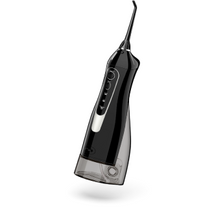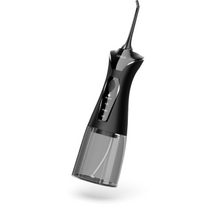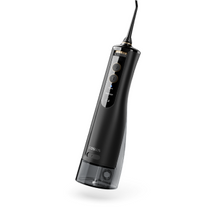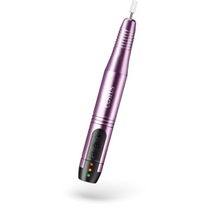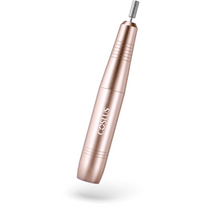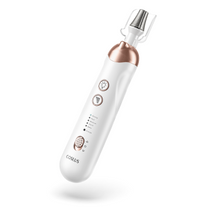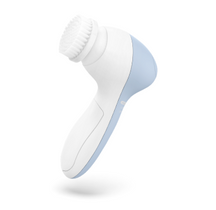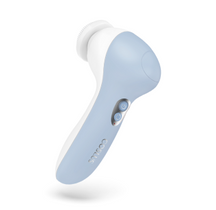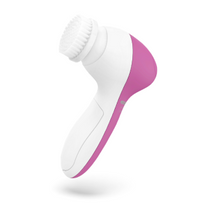Quick Answer
No, water flossers cannot remove tartar once it has hardened on your teeth. While they excel at washing away loose plaque and preventing tartar formation by cleaning hard-to-reach areas, only dental professionals can remove existing tartar deposits using specialized scaling instruments during professional cleanings.
Introduction
Maintaining good oral health is a top priority for many people, and dealing with tartar buildup is a common concern. Water flossers have become increasingly popular dental tools that many wonder if they can remove stubborn tartar deposits. While water flossers excel at washing away plaque and preventing tartar formation, they cannot remove hardened tartar that has already formed on teeth. Understanding the difference between plaque and tartar is essential for developing an effective oral care routine that keeps your smile healthy and bright.
What is Dental Plaque?
Dental plaque is a sticky, colorless or pale yellow film that constantly forms on your teeth throughout the day. It's made up of bacteria, food particles, and saliva that naturally collect on tooth surfaces. Think of plaque as an unwelcome guest that moves in on your teeth after you eat or drink.
When you consume foods and beverages—especially those containing sugars and starches—the bacteria in your mouth feed on these particles and produce acids. These acids can attack your tooth enamel, the protective outer layer of your teeth, which is the first step in cavity formation.
If plaque isn't removed daily through brushing and flossing, it can lead to several dental problems:
Tooth decay (cavities): The acids produced by plaque bacteria gradually erode tooth enamel, creating holes in your teeth.
Gingivitis: This early stage of gum disease occurs when plaque builds up along the gumline, causing inflammation, redness, and bleeding when you brush.
Bad breath: The bacteria in plaque release unpleasant-smelling compounds that contribute to bad breath.
The good news is that plaque is soft and can be removed with proper daily oral hygiene. Regular brushing (twice daily), flossing, and using a tool like a water flosser can effectively disrupt and remove plaque before it hardens into tartar, which is much more difficult to remove.
What is Tartar (Dental Calculus)?
Tartar, also known as dental calculus, is what happens when plaque overstays its welcome on your teeth. It's the hardened, calcified form of plaque that firmly attaches to your tooth surfaces and can appear as yellow, brown, or even black deposits. Unlike plaque, which is soft and colorless, tartar is mineral-rich, rough-textured, and often visible to the naked eye.
The transformation from plaque to tartar happens through a process called mineralization. Here's how it works: The minerals in your saliva—primarily calcium and phosphate—naturally begin to combine with the sticky plaque on your teeth. Over time, usually within 24-72 hours of plaque formation, these minerals crystallize and harden the plaque into tartar. Think of it like cement setting—once it hardens, it's not coming off easily.
Tartar typically builds up in predictable locations in your mouth:
Along the gumline (where your teeth meet your gums)
Between teeth, especially in tight spaces that are harder to clean
Around dental work like crowns or bridges
Behind your lower front teeth, where saliva glands release minerals
What makes tartar particularly problematic is that its rough, porous surface creates the perfect environment for even more plaque to accumulate. It's like a vicious cycle—tartar forms, collects more plaque, which then turns into more tartar. Additionally, the rough texture can irritate your gums, potentially leading to more serious gum disease over time.
Unlike plaque, which you can remove at home with good oral hygiene, tartar can only be safely removed by dental professionals using specialized instruments during a professional cleaning.
Why Tartar is a Major Concern
Tartar buildup isn't just an aesthetic issue—it's a serious dental health concern that can lead to several problems if left untreated.
Gum Health Problems
When tartar forms along and below your gumline, it creates a rough surface that irritates your sensitive gum tissue. It typically leads to gingivitis, the early stage of gum disease characterized by red, swollen, and bleeding gums. If untreated, it can progress to periodontitis, the later stage of gum disease where the gums pull away from the teeth, creating pockets that become infected. Later on, this infection can damage the bone and tissues that support your teeth and even lead to tooth loss.
Increased Tooth Decay Risk
Tartar creates the perfect environment for harmful bacteria to thrive. These bacteria produce acids that eat away at your tooth enamel, increasing your risk of developing cavities. The rough surface of tartar also makes it easier for more plaque to accumulate, creating a continuous cycle of dental damage that becomes increasingly difficult to manage.
Persistent Bad Breath
The bacteria that live in tartar deposits release foul-smelling chemicals as they feed and multiply. This can cause chronic bad breath (halitosis) that doesn't get better with brushing, flossing, or mouthwash. If you're developing chronic bad breath despite good oral hygiene, tartar buildup might be the culprit.
Noticeable Tooth Discoloration
Tartar is usually yellow or brownish deposits on your teeth, most often along the gumline. As it builds up, it can really impact the appearance of your smile. Unlike surface stains from tea or coffee that can be minimized with whitening products, tartar staining cannot be removed with at-home treatments—it needs professional cleaning.
Complications Beyond Your Mouth
There is increasing evidence that tartar bacteria can cause health issues outside of your mouth, including heart disease, diabetes complications, and respiratory infections. While the exact links are still being studied, a tartar-free mouth is increasingly recognized as an important part of overall health.
The good news is that tartar can be efficiently eliminated through routine professional dental cleanings before it causes severe problems, and proper daily oral hygiene can significantly decelerate the rate at which it forms in the first instance.
How Do Water Flossers Work? The Science Explained
Mechanism of Action
Water flossers, also known as oral irrigators, use a surprisingly simple but effective technology to clean your teeth. These devices deliver a concentrated, pulsating stream of water through a specialized tip, creating a combination of water pressure and pulsation that works wonders for your oral health.
When you aim this pressurized water stream at your teeth and gums, several things happen simultaneously:
The water forcefully flushes out food particles trapped between teeth and below the gumline
The pulsating action creates a hydrokinetic effect that disrupts bacterial biofilms (the organized communities that make up plaque)
The water reaches areas that traditional brushing and string flossing often miss, like deep periodontal pockets
Think of it like power-washing your teeth—the water stream physically dislodges debris while the pulsations create tiny bubbles that burst and help break up the sticky plaque biofilm. Most water flossers allow you to adjust the pressure (typically between 10-100 PSI) to suit your comfort level and specific needs.
Proven Effectiveness in Plaque Removal
Water flossers truly shine when it comes to removing loose debris and disrupting newly-formed plaque, especially in places that are challenging to clean with traditional methods.
Water flossers are particularly beneficial for:
People with braces or dental work like bridges and implants
Those with limited dexterity who struggle with string floss
Individuals with sensitive gums who find traditional flossing uncomfortable
Anyone with periodontal pockets (spaces between teeth and gums)
The pulsating action of water flossers reaches up to 4-5mm below the gumline—areas that harbor harmful bacteria but are difficult to clean with other methods. This makes water flossers excellent tools for preventing gingivitis and maintaining gum health.
While water flossers excel at removing loose plaque and food particles, it's important to understand their limitations when it comes to tartar, which we'll explore in the next section.
Can a Water Flosser Remove Tartar?
Water Flossers Cannot Remove Hardened Tartar
Water flossers cannot remove tartar (also called dental calculus) once it has formed on teeth. Tartar is a hard, crusty substance that develops when soft plaque stays on teeth too long and mixes with minerals from your saliva.
Why Water Pressure Isn't Enough
Tartar firmly bonds to tooth enamel in a way that water pressure is not able to dislodge. The hardened material needs special dental tools that possess the ability to physically scrape it off the tooth surface. No matter how high you dial the pressure on a water flosser, it simply is not able to provide the physical force needed to remove these hardened deposits.
Not a Substitute for Professional Cleaning
Think of water flossers as prevention, not as a means to treat already existing tartar. Professional dental cleaning from dentists or dental hygienists is the sole method of effectively removing tartar. Dentists and hygienists utilize specialized equipment that is designed to safely scrape away the tartar without hurting your teeth.
Marketing Claims vs. Scientific Evidence
Some water flosser companies might hint their products help with tartar, but science doesn't back up claims about tartar removal. Research shows water flossers are excellent for washing away plaque and preventing tartar from forming in the first place, but they can't remove tartar that has already hardened on your teeth. Dentists and dental organizations consistently point out this limitation, even while recognizing the many other benefits water flossers offer for keeping your mouth clean.
Does Water Flossing Prevent Tartar?
Yes, water flossing effectively prevents tartar by removing plaque before it can harden. By washing away plaque daily, water flossers help keep your teeth clean and tartar-free.
Stopping Plaque Before It Hardens
Water flossers flush away soft plaque from tooth surfaces, between teeth, and along the gumline. Daily use of a water flosser prevents this sticky film from hardening into tartar.
Water Flosser vs. String Floss for Prevention
Water flossers and string floss both help prevent tartar, but in different ways. Water flossers use streams of water to fire off plaque and food debris, deeper between gums (up to 6mm) and between braces and bridges. String floss strikes tooth surfaces directly and has the capability of pulling out plaque from areas in between tight teeth where water may not be able to get to as easily. Most dentists recommend doing both methods for the most thorough cleaning, although what works best is up to your teeth, ability, and dental work.
Why Choose Water Flossers? Benefits Beyond Basic Cleaning
Preventing tartar is perhaps the greatest benefit of water flossers, yet they help your mouth in many other ways too. Water flossers provide many health benefits that make them a great addition to your daily cleaning routine.
Better Gum Health
Water flossers reduce gum disease and bleeding since they wash away destructive bacteria from your gumline and between your teeth. Gentle pulses of water clean and also maintain healthy gums.
Cleaning Hard-to-Reach Areas
For people with braces, implants, bridges, or tight teeth, water flossers get into spaces where ordinary floss might have a hard time. The water stream can navigate around brace wires, under bridges, and between tightly fitting teeth to remove food and bacteria that tend to get stuck there. Dentists often prescribe water flossers for patients with these kinds of dental issues.
Gentler Alternative
The majority of people find water flossers more comfortable to use than string floss, especially those with receding or sensitive gums. The water stream cleans efficiently without the pain that can be caused by improperly using string floss. This cleaner, yet gentler, cleaning motivates people to stick to it more regularly, which leads to better mouth health.
Easy to Use
Water flossers benefit those who struggle with their hands, arthritis, or coordination problems who have trouble using string floss. The simplicity of design makes daily cleaning easier for many users, including children, the elderly, and people with physical disabilities. Because they are simpler to manipulate, users are more likely to floss daily.
How is Tartar Actually Removed? The Professional Solution
While water flossers help prevent tartar buildup, only dental professionals can remove tartar once it forms on your teeth. Regular visits to your dentist remain essential for maintaining optimal oral health.
Expert Care: What Dentists and Hygienists Provide
Dental professionals are the only ones who can safely and effectively remove tartar from your teeth. They possess the requisite training, the appropriate tools, and the expertise to scale off hardened deposits without damaging your tooth enamel or your gums. Attempting to get rid of tartar at home with non-dental tools has the potential to scratch your enamel, hurt your gums, and cause more damage than benefit.
Professional Dental Cleaning
During a professional cleaning, your dental hygienist or dentist will perform a process called scaling to remove tartar. They use either hand-held metal instruments called scalers or ultrasonic devices that use vibration to break up and remove tartar deposits. These tools can reach above and below the gumline where tartar often accumulates.
When all of the tartar is gone, your dental professional will brush your teeth with a slightly abrasive paste. This polishing helps to smooth the surface of the tooth, making it harder for new plaque to stick and easier for you to clean between visits. The final result is not only cleaner teeth but also fresher breath and healthier gums.
Why Regular Appointments Matter
Most dentists recommend cleanings every six months for the average person. Some people, though, need more frequent cleanings, such as those with:
A history of gum disease
Heavy tartar buildup
Certain medical conditions like diabetes
Smoking habits
Your dentist will recommend a cleaning schedule based on your individual needs. Following this schedule helps prevent excessive tartar buildup and catches any developing dental issues before they become serious problems. Even with excellent home care using water flossers and brushing, these professional cleanings remain necessary to remove tartar that inevitably forms in hard-to-clean areas.
Keep Your Smile Tartar-Free with Smart Water Flosser Habits
Water flossers can't eliminate tartar once it's formed, but they're excellent at preventing it from occurring in the first place by rinsing away plaque each day. For the healthiest smile, use your water flosser daily and continue to see your dentist on a regular basis for professional cleanings to scrape away any tartar that builds up. It's this team effort—your daily water flossing and professional care—that keeps your gums healthier, breath fresher, and smile brighter. Start with a water flosser today, select one that meets your needs, and follow those dental appointments to maintain your oral health at its optimum for the coming years.
Official COSLUS
April 18 .2025·COSLUS


